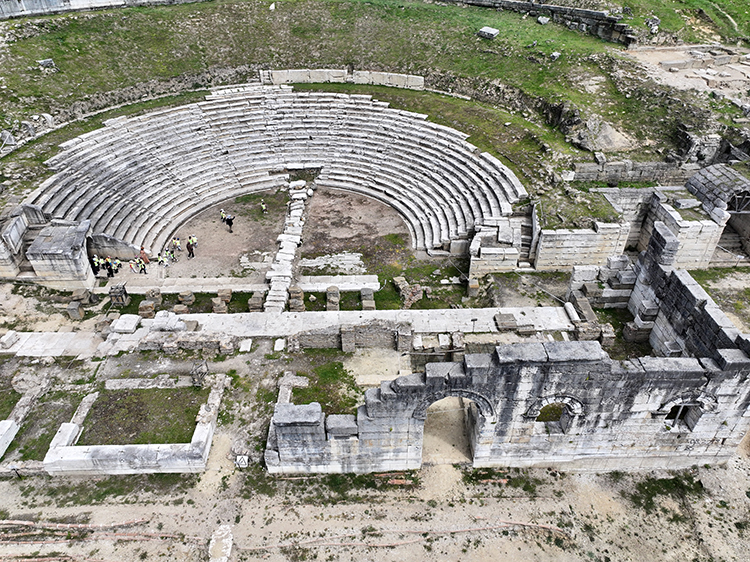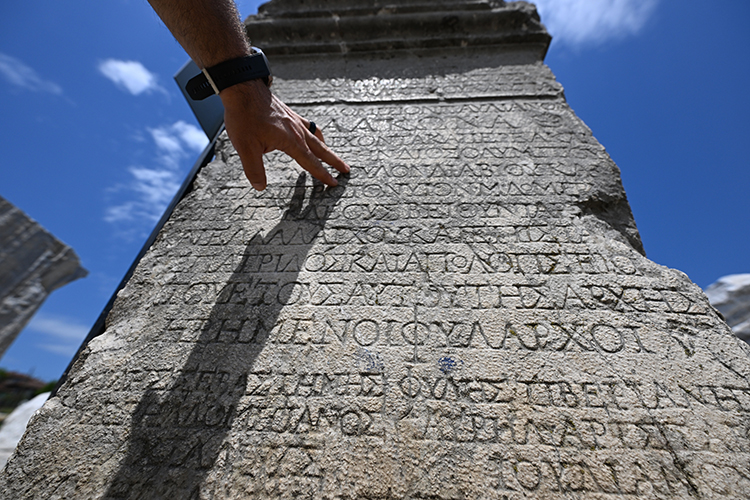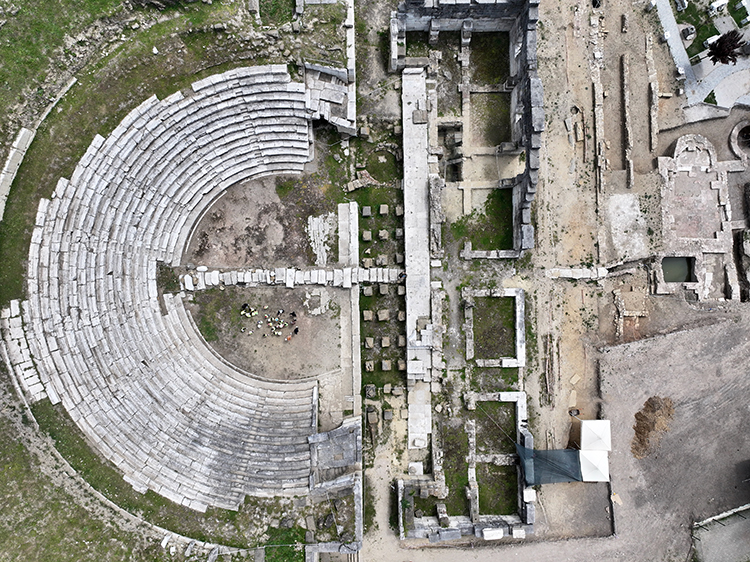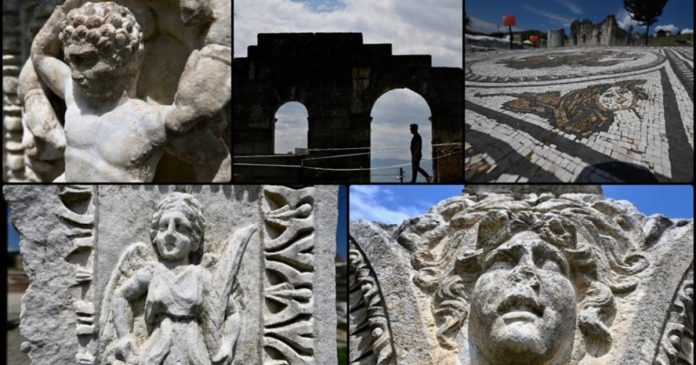Archaeological excavations in Düzce’s Konuralp district, Türkiye, have uncovered the rich heritage of the ancient city of Prusias ad Hypium. Known as the ‘Ephesus of the Western Black Sea,’ the site dates back to the 3rd century BCE. Excavations have been ongoing for about six years, focusing on its 10,000-seat theatre. The Konuralp Museum Directorate supervises the efforts, with authorization from the General Directorate of Cultural Heritage and Museums. Additionally, the Düzce Municipality provides support. As a result, the excavations have uncovered several significant artifacts, including:
- A Medusa head sculpture
- A bust believed to represent Alexander the Great
- A statue of Apollo
- A mosaic featuring a lion motif
- A portrait bust thought to depict M. Iulius Proklos, the Roman benefactor responsible for constructing the theatre’s stage building
- A water storage pool estimated to date back to the Byzantine period.

Authorities added these discoveries to the cultural heritage inventory, highlighting the site’s historical significance.

Unearthing Prusias ad Hypium: The Grand Theatre and Cultural Insights
Art historian Raşit Aydın, involved in the excavation, emphasized the theatre’s grandeur and importance. He noted that the theatre is the most prominent structure uncovered so far and that its elaborate design indicates the involvement of skilled artisans and architects of the era. The discovery of ancient theatre tickets suggests the venue’s significant role in the city’s cultural life .

Looking ahead, the excavation team plans to focus on uncovering surrounding structures, such as a gymnasium, stadium, Roman bath, and a large temple, which are believed to lie beneath the Konuralp region. These efforts aim to further illuminate the city’s historical and cultural landscape.
The artifacts unearthed reflect Greek and Roman mythology. They highlight the city’s rich artistic heritage and the high level of craftsmanship achieved during its peak periods. These findings enhance our understanding of Prusias ad Hypium’s historical significance. They also contribute to the broader narrative of ancient civilizations in the region.


